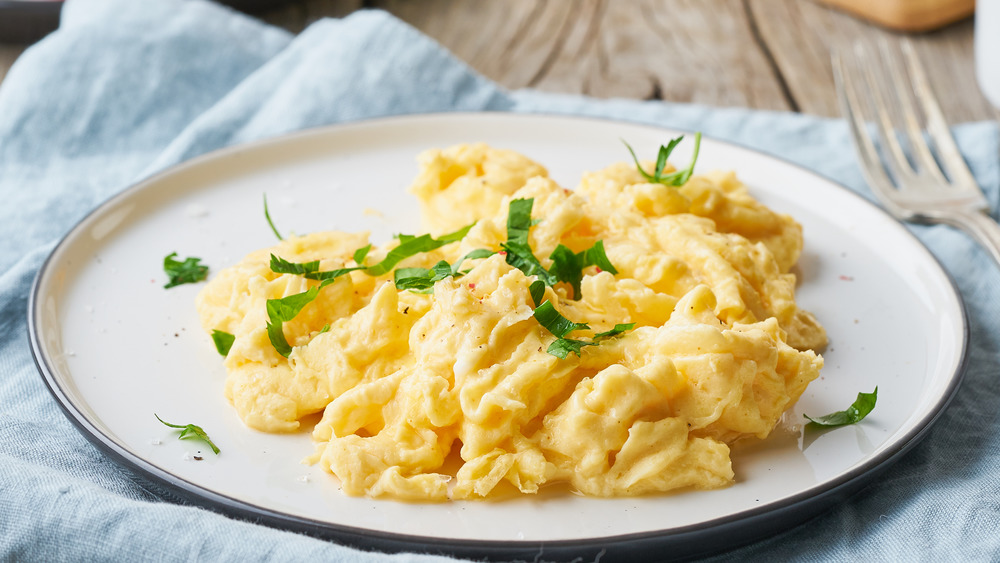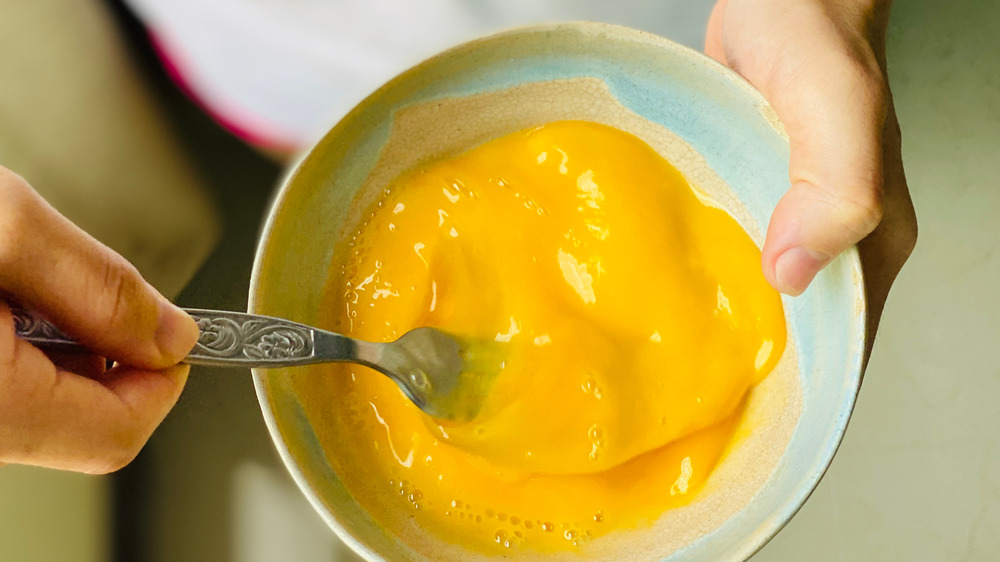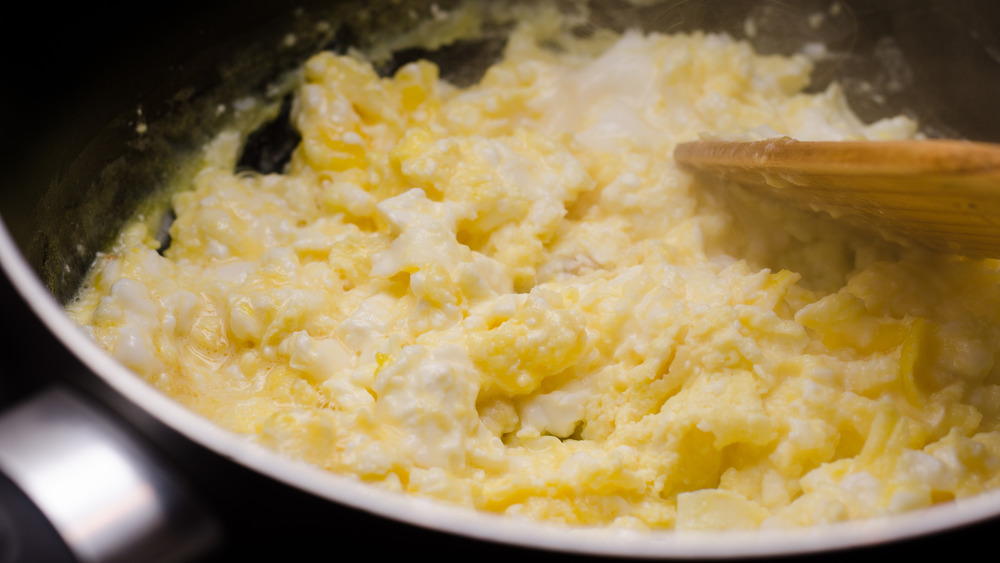J. Kenji López-Alt's Surprising Trick For Perfect Scrambled Eggs
If you are a true fan of pillowy, custardy scrambled eggs, then you know that a perfect batch requires patience. Ideal scrambled eggs, according to MasterClass, are soft and creamy with large, fluffy curds. And, that to achieve all these qualities, they must be cooked over a low temperature. Soft and creamy scrambled eggs sound divine, but low heat can only mean one thing: a longer cooking time.
The Kitchn's recipe for Slow-Cooked Scrambled Eggs calls for a cooking time of up to 15 minutes. Now while we might accept this kind of time commitment for a simple plate of eggs on a lazy Sunday morning, it's less than ideal on a regular, rushing-out-the-door work morning. Or when contending with grouchy kids, spouses, or partners who are impatiently awaiting their breakfast!
Rather than be forced to choose between dry, overcooked quick eggs, or a long wait for soft, creamy scrambled egg heaven, here's a surprising trick from J. Kenzi López-Alt that gives us hungry people perfect scrambled eggs in a fraction of the time.
López-Alt says this ingredient makes all the difference in scrambled eggs
In an article for the New York Times, López-Alt shared that he, too, was looking for a way to create creamy scrambled eggs with a slow-cooked texture, but in the length of time it takes, "to toast a slice of bread." He got a tip about a scrambled eggs recipe with a surprising ingredient, created by Mandy Lee of the Lady & Pups food blog. The secret ingredient is starch.
It's easy to see why Lee's recipe caught López-Alt's attention: the cooking time in her recipe is a mere 15 seconds! According to the Lady & Pups recipe post, while trying to make a homemade remedy for her sick dog, she discovered by accident the magic that adding starch creates. She mixed cornstarch with beaten eggs and found that the texture of the eggs improved, staying soft and loose even when cooked over high heat.
López-Alt investigated this technique and learned why it works. He shares in the New York Times article that the starch molecules help the eggs in two ways. First, they slow down the egg proteins from binding together, something that happens quickly over high heat. This binding forces water out and leaves eggs dry and tough. The starch molecules also absorb and hold onto moisture. In short, adding a starch solution to the beaten eggs allows you to cook them over higher heat, creating soft and creamy scrambled eggs in mere minutes.
Use these types of starches in your eggs
J. Kenji López-Alt notes in his New York Times article that different types of starches will work in this scrambled eggs technique. Tapioca starch and potato starch have a slight advantage over cornstarch. They begin working at a lower temperature than cornstarch, and create creamier eggs — but slightly more so. López-Alt says that cornstarch can still be used with incredible results.
Want to try this technique at home? In his New York Times recipe for Extra Creamy Scrambled Eggs, López-Alt says to make a mixture of the starch, water, and cubes of cold butter. (The cubes of butter add richness and also help regulate the temperature of the cooking eggs.) Then whisk the eggs into the mixture until it's foamy.
López-Alt also has an ingenious way of getting the pan to the perfect temperature. He adds a smidgen of water to the skillet and heats it over medium-high until the water steams away. At that moment, the pan is ready for the eggs. And guess how long until those soft, custardy scrambled eggs are ready? Only two minutes!
Good things come to those who wait. And also to those who don't wait, because they know this clever scrambled eggs technique!


